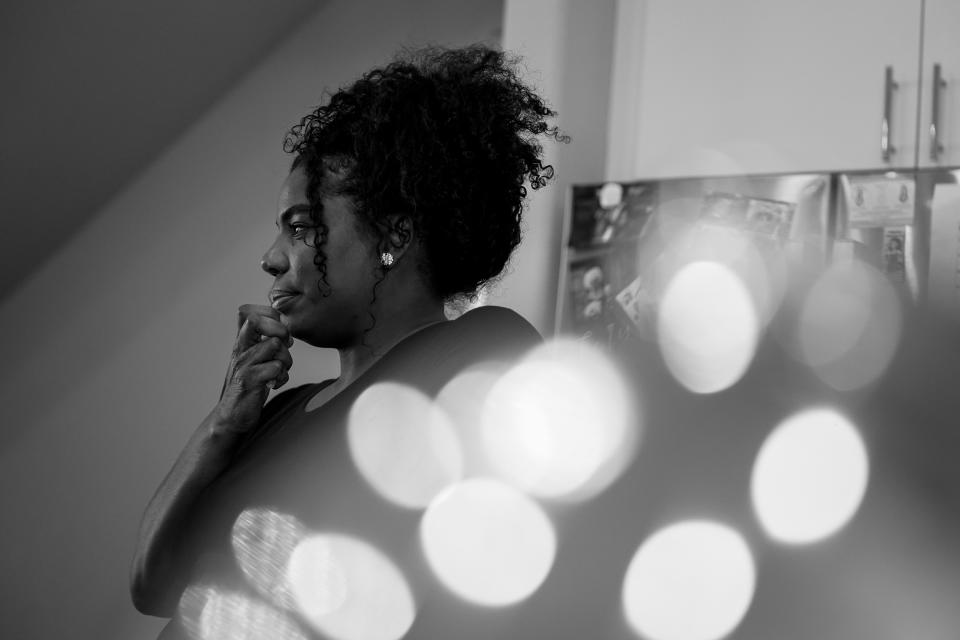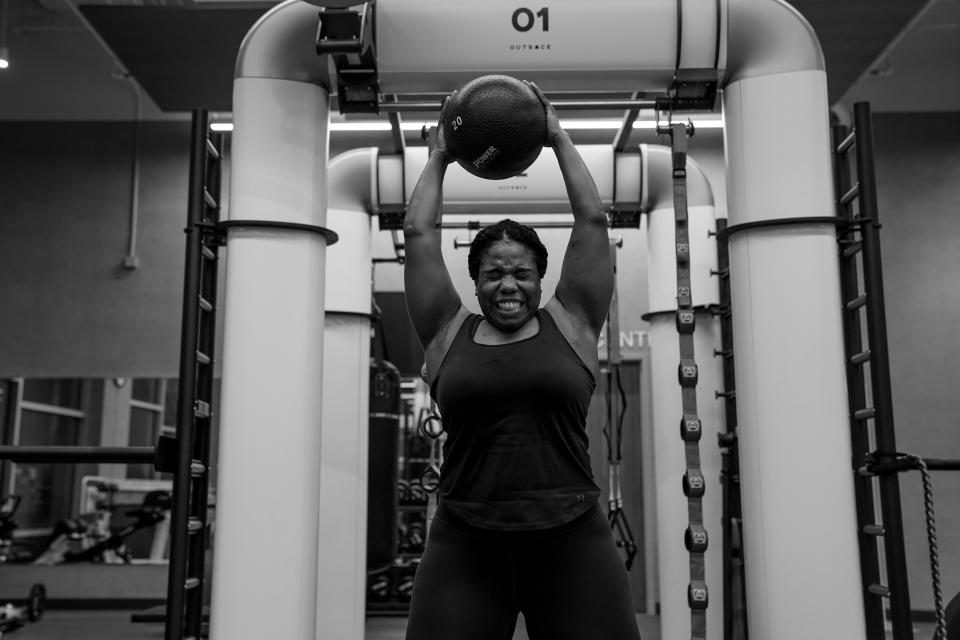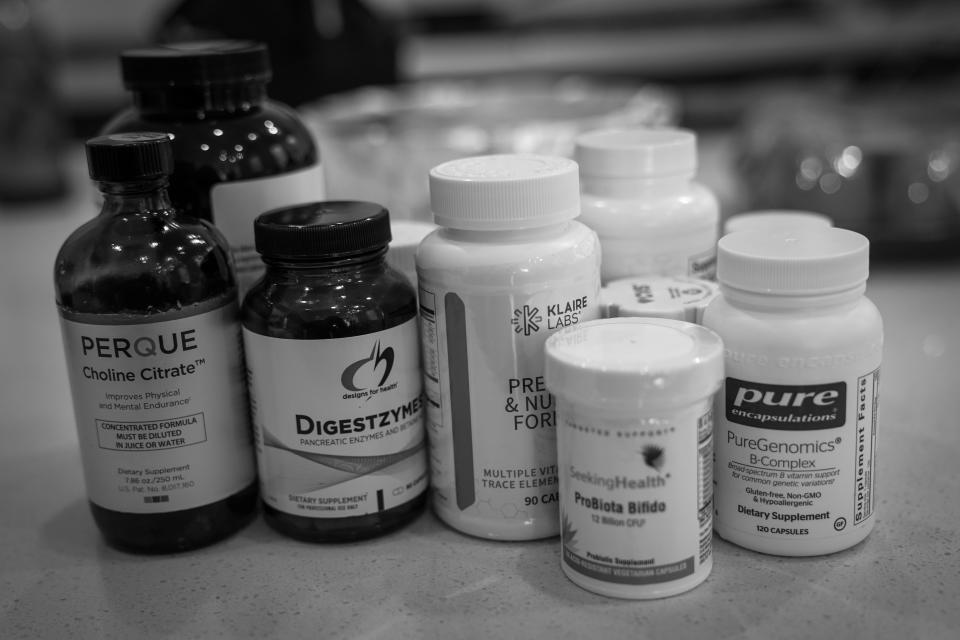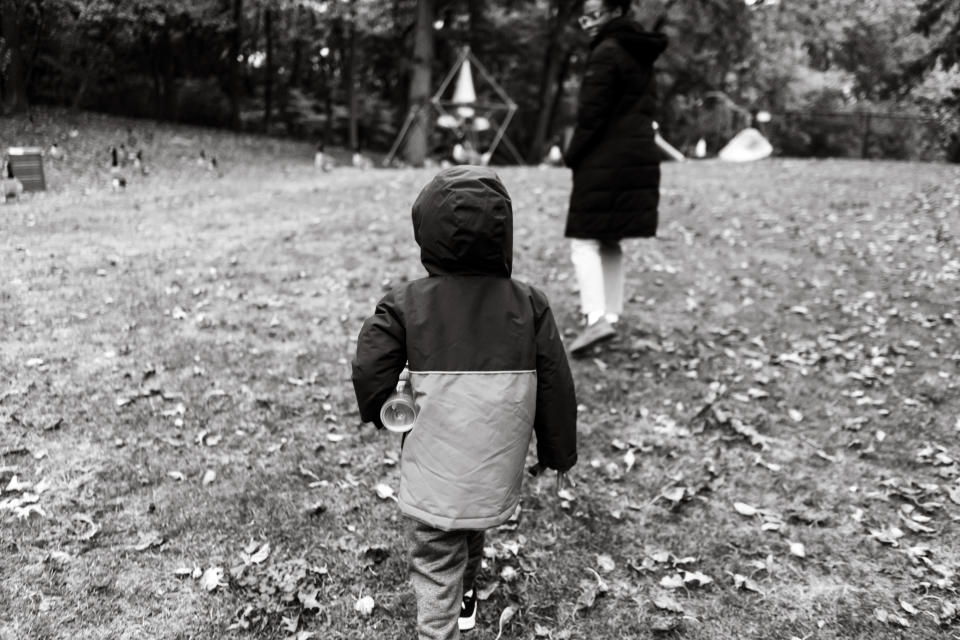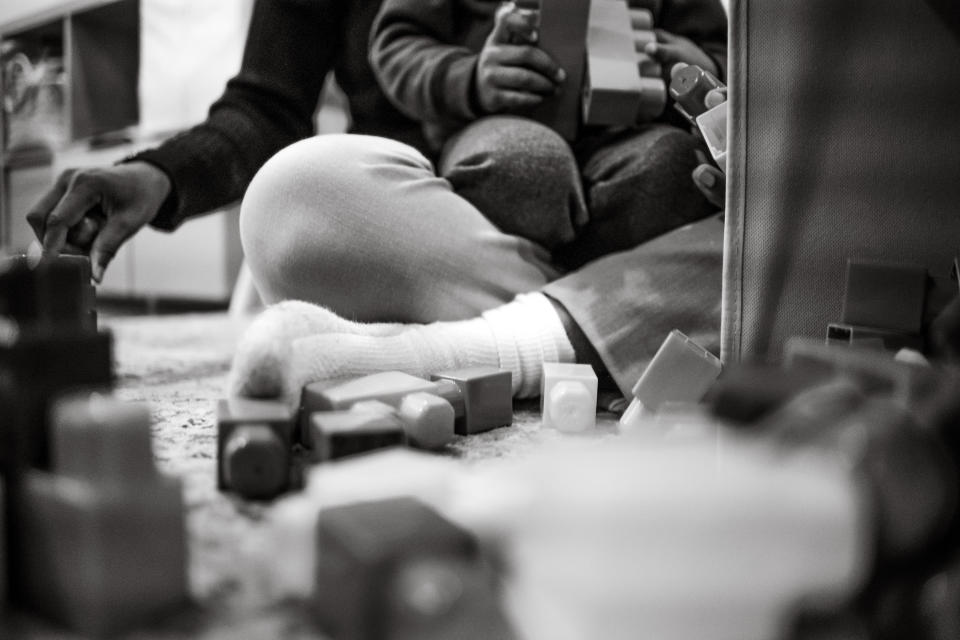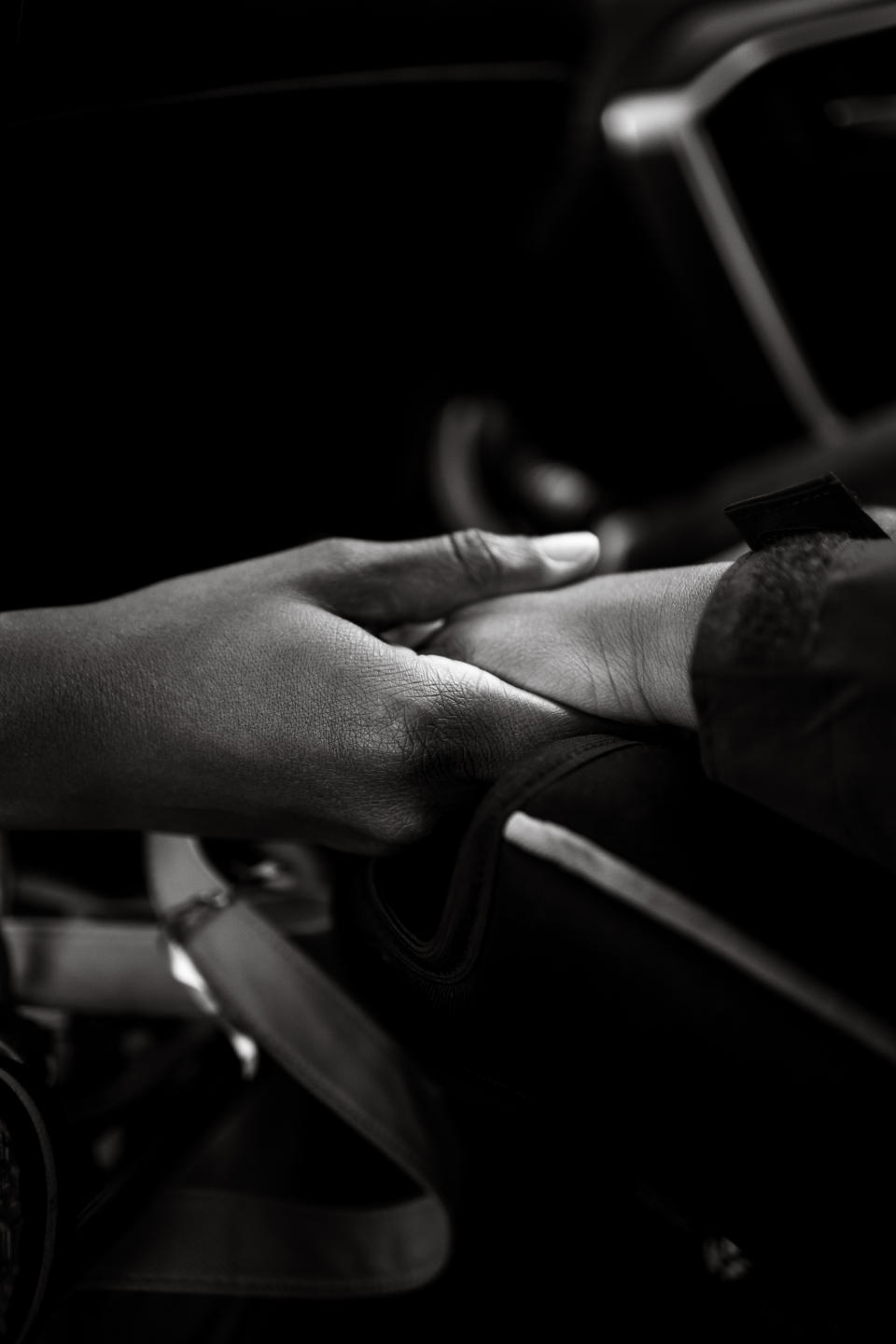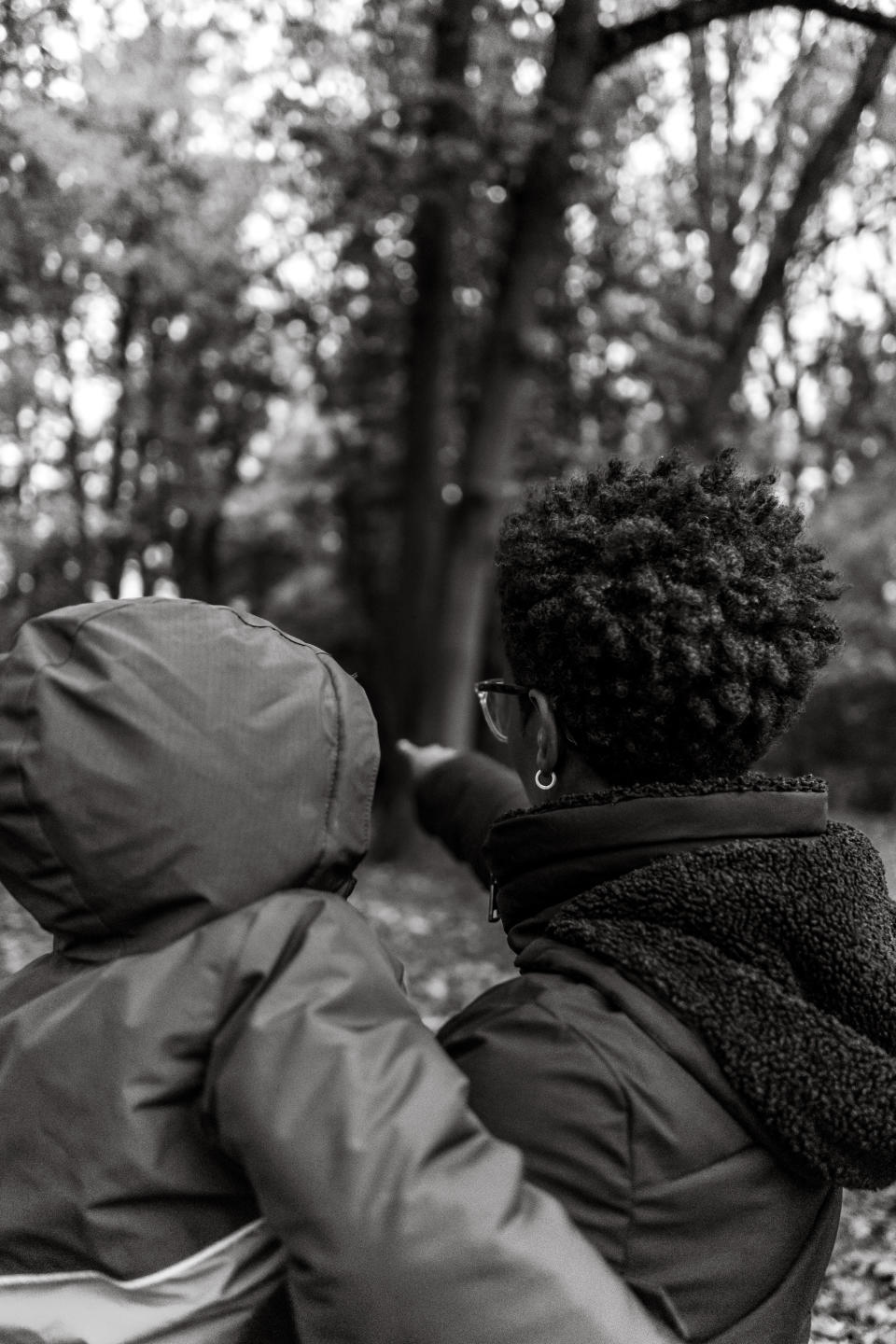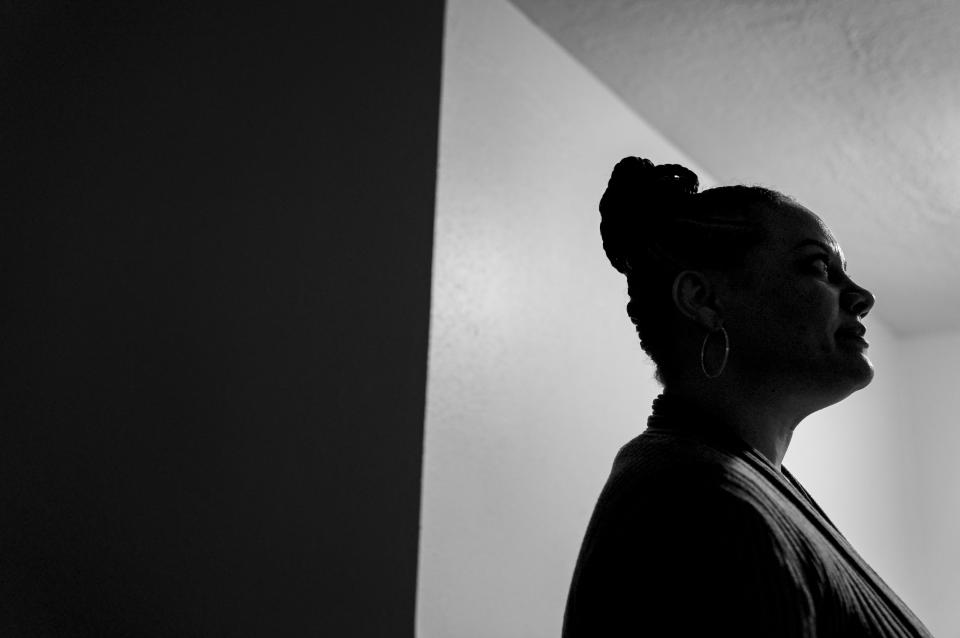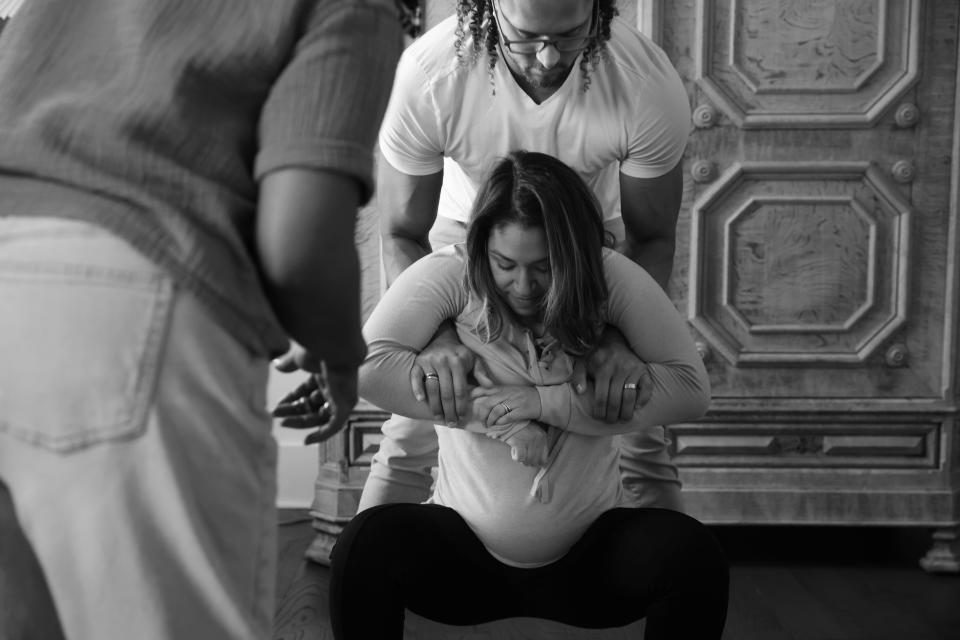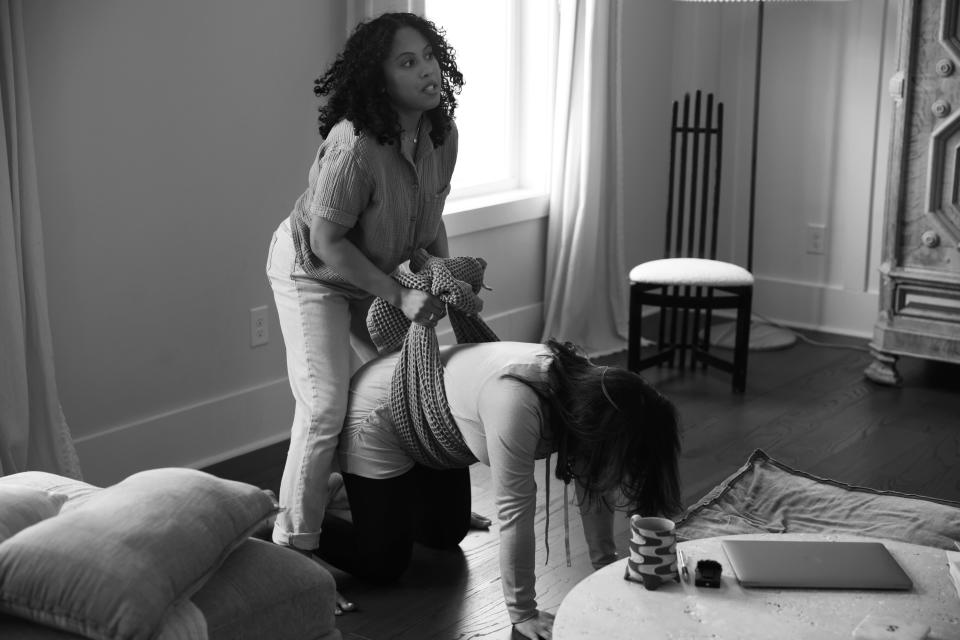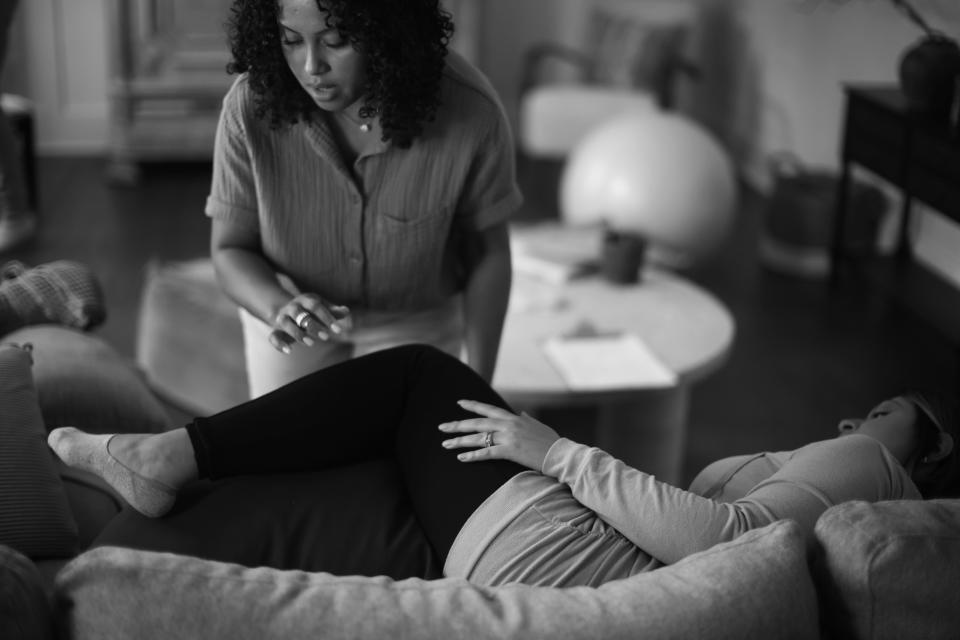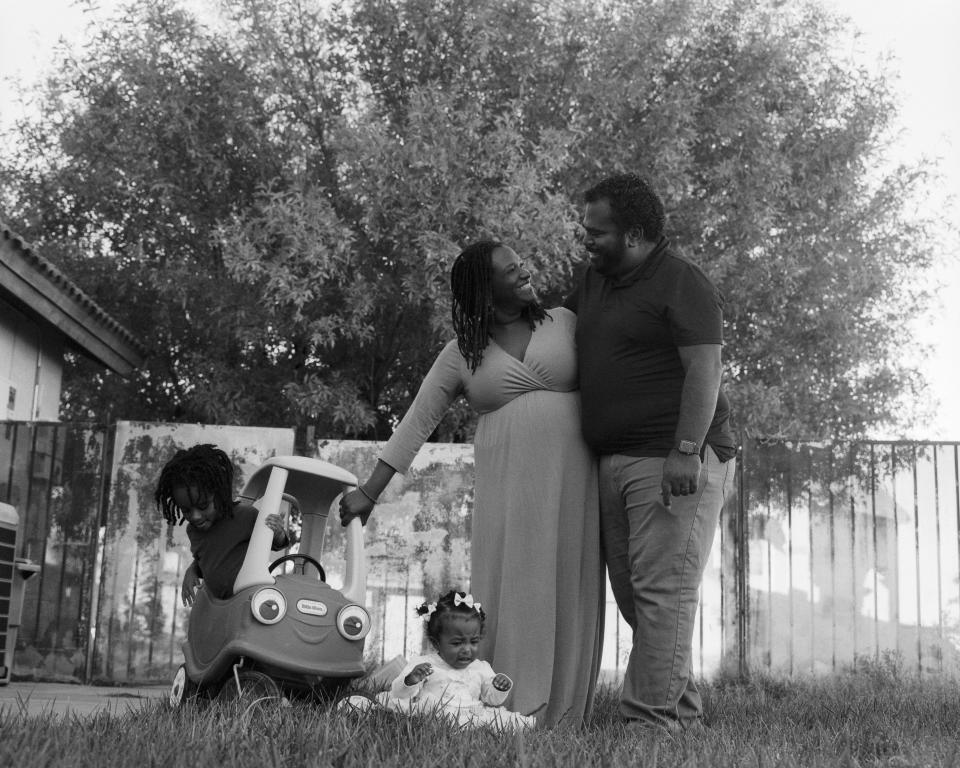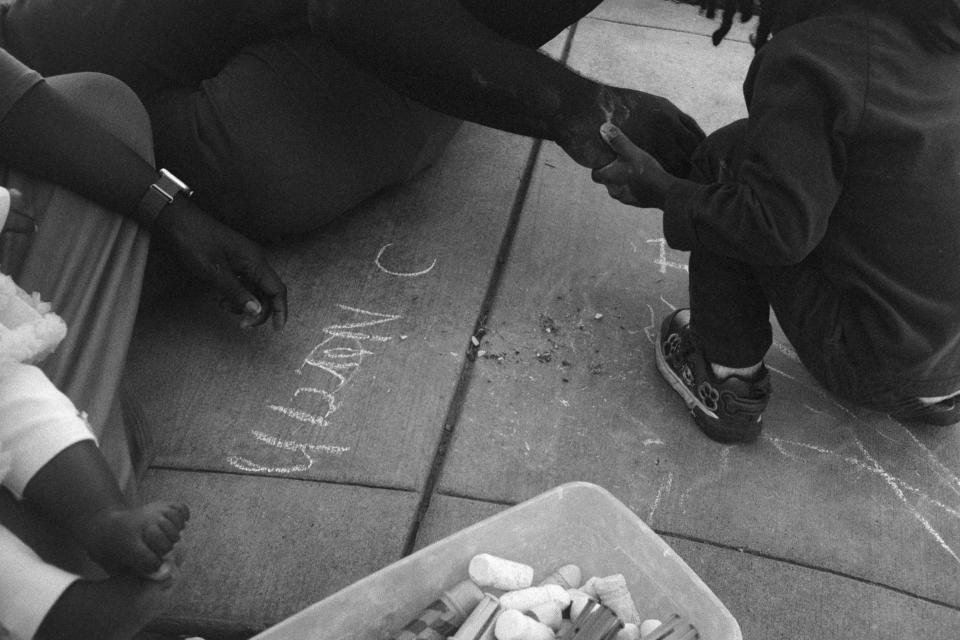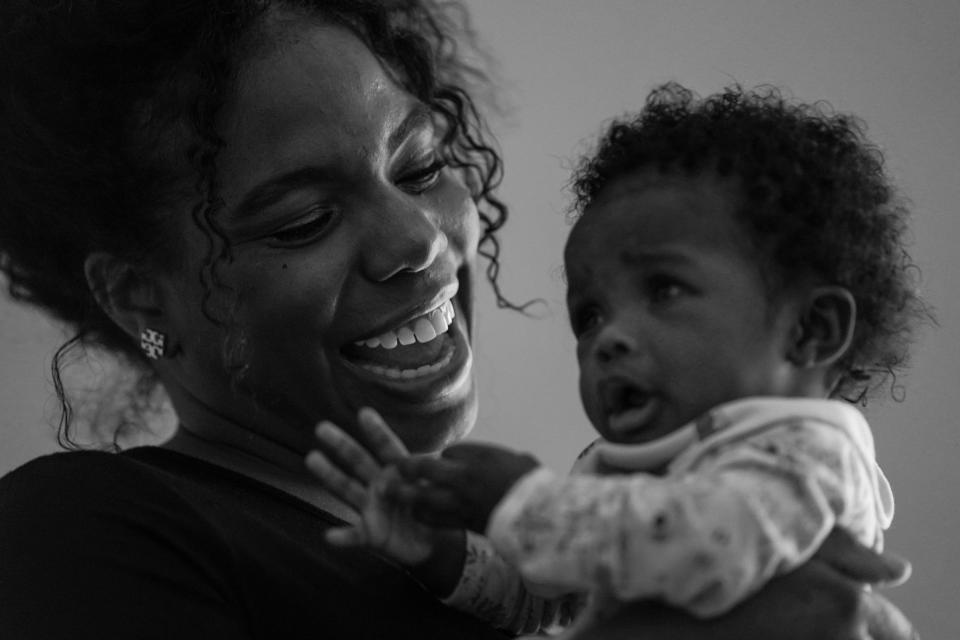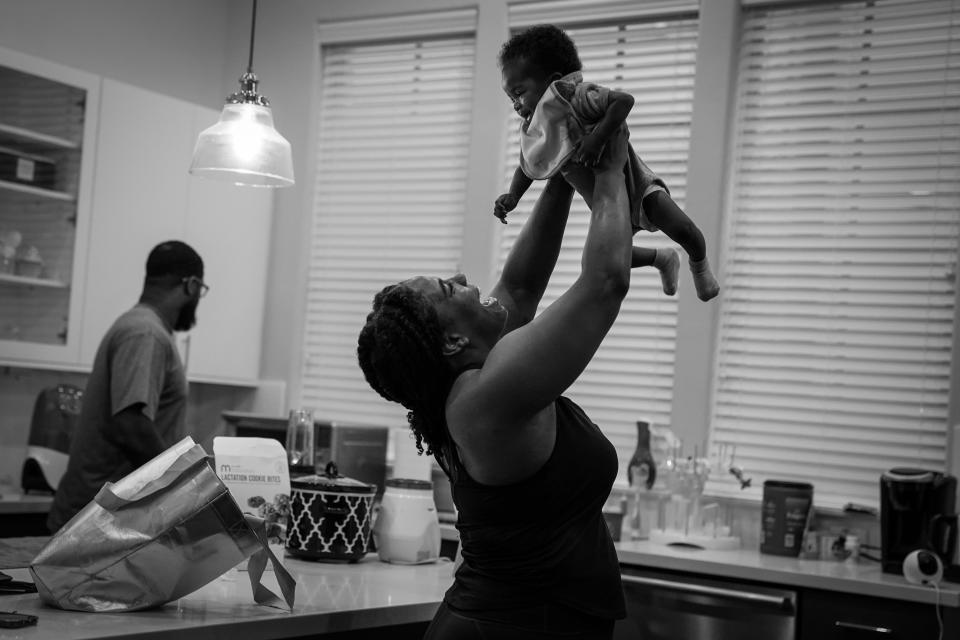For some Black women, the fear of death shadows the joy of birth
HOUSTON - Arielle Anderson couldn’t get her mind off those old Facebook posts, memorial messages for a woman who had died more than two years earlier.
This feels like a horrible nightmare. We were so excited to meet Baby Boy Carter. Until we meet again, my sister.
There the woman was in the maternity photos shared on Facebook, visibly pregnant, smiling broadly and nestled in her husband’s arms. Four days later, she was gone. So, too, her baby. And here Anderson was, newly pregnant and unable to set aside the intrusive thoughts.
As a young, Black, female attorney whose roots also were in Louisiana, Anderson said she saw herself reflected in the 34-year-old’s life - and a cautionary tale in her death: Pregnancy while Black can be fatal.
“To live in fear as you plan for a joyous event,” she remembers thinking, “there’s some kind of paradox there.”
According to public health officials, there is.
In the United States, the deadliest place to give birth among high-income nations, Black women die at two to three times the rate of their White, Asian and Latina peers. Not only are Black women more likely to die from cardiovascular issues - blood clots, hemorrhages, high blood pressure - while pregnant and after giving birth, they are more likely to experience the discrimination and disrespect that contribute to maternal deaths, research also shows.
And so, as word of pregnancy-related deaths and near misses reverberates through the news alerts, social media timelines and minds of many Black women, anticipating the beginning of life too often brings fears of its end. A sense of foreboding that exacts a price.
To offset the microaggressions, stereotypes and general disregard that experts say Black women too often confront while seeking health care - pregnant or not - they try to accommodate and compensate for the biases medical personnel carry by mentioning their credentials and code-switching (read: changing how they talk, dress and move).
Yet public health experts say the things people do to protect themselves from life’s threats - to cope - are the very things that can make them sicker and die quicker. This can add another source of stress. Surviving means being in a constant state of vigilance against potential danger, drawing from deep wells of resilience. Yet this hypervigilance causes internal harm by wearing down the body.
“It all feeds on itself,” said Arline T. Geronimus, a professor at the University of Michigan who has been studying the health of women and babies since the 1980s.
Anderson and her husband hadn’t planned on starting a family when they did, months after she began her dream job as a litigation attorney in a major law firm’s Houston office. Her goal was to make partner within eight years, meaning there were hours to be billed and cases to be won.
Suddenly, Anderson had another goal: ensuring she and her baby not only survived but thrived. To Anderson, that meant finding a Black obstetrician (preferably a woman) and hiring a Black doula to help insulate her from the stress and isolation of navigating predominantly White spaces as a Black woman.
Her first trimester was mostly uneventful until her blood pressure spiked, shocking the 35-year-old former college athlete who prided herself on a healthy lifestyle. After a month of no change, combined with other factors including her weight and age (obstetricians once regarded pregnancies at 35 or older as “geriatric”), Anderson’s doctor deemed her pregnancy high-risk.
“It didn’t matter how much money I made, didn’t matter that I was an attorney. There was no paying my way out of this,” she said. “This is something that kills women.”
A 2022 federal report underscored the point: About 16 percent of all women who delivered babies in hospitals from 2017 to 2019 had high blood pressure, but for Black women, it was more like 1 in 5 who gave birth in a hospital.
Anderson was put on daily medication. That reduced her blood pressure, but it remained too high. So, she bought a blood pressure cuff to use at home. She took a handful of expensive supplements that claim to provide benefits such as aiding digestion and boosting red blood cell production, and took a prenatal vitamin.
Tests showed she had a gluten sensitivity and allergies to apples, carrots and tree nuts. Anderson changed her diet and started working out with a trainer three times a week.
But some sources of stress were beyond Anderson’s control.
At work, where she is the only Black attorney in her office, Anderson recalled a co-worker casually dismissing her worries about having a high-risk pregnancy by asking, “Are you sure it’s not white coat syndrome?” Never having heard of white coat syndrome, Anderson said she asked the colleague to elaborate and was told, “Oh, it’s like you only have high blood pressure at the doctor’s office because you’re nervous.”
Her colleague not understanding - or even believing - the potential for catastrophe “was a harrowing moment for me,” Anderson said.
Fear kept gnawing at Anderson, stopping her from taking “happy-go-lucky” pictures of “bump stuff.” There would be no candid photos of her growing belly or stylized images from a professional maternity shoot to post online. “And it’s a shame,” she said. “Black women should be able to experience their pregnancy worry-free.”
A fear of dying
Unfortunately, too many don’t.
Anderson’s obstetrician, Chandra Higginbotham, said it’s not uncommon for patients to show up “afraid they’re going to die.” Some have reason to be scared because they had health issues before pregnancy, she said, noting a recent Tufts University study that found only 6.8 percent of adults had optimal levels of blood pressure, blood sugar, cholesterol and weight along with the absence of cardiovascular disease in 2017-2018.
“Pregnancy is hard,” Higginbotham said. “It takes a toll on your body metabolically, physiologically, biochemically, emotionally, and if you are already on the brink of, as I tell my clients, metabolic jacked-up-ness, then it’s an uphill battle.”
She takes a holistic approach to care, telling patients her goal is to optimize their health. But it works only if they do everything she asks, she said, which includes “my own little protocol” of tests to determine allergies and supplements “because most people are nutritionally depleted.”
“What you’re doing impacts not only this baby that you’re gestating,” she said, “but four more generations down the road.”
How? “Epigenetically,” she said, referring to the cellular process of how genes are turned on and off by behaviors and environment.
It’s a process Catherine Limperopoulos, a developmental neuroscientist, has been trying to understand for more than a decade, specifically how exposure to adverse environments can affect a pregnant woman’s placenta and the developing brain of a baby in-utero.
Initially, her research focused on women with high-risk pregnancies, meaning they had a diagnosis of preeclampsia - a serious blood pressure condition during pregnancy - or diabetes, or that fetal anomalies had been detected.
About five years ago, the researchers, who had already been performing studies of women’s placentas and their unborn babies using MRI images, decided to look at women’s mental health and emotional well-being, too, said Limperopoulos, director of the Center for Prenatal, Neonatal & Maternal Health Research at Children’s National Hospital in Washington, D.C.
Simultaneously, they found that among patients with ample resources and low-risk pregnancies, 27 percent reported clinically high levels of stress and anxiety. Those rates climbed significantly when researchers looked at women with fewer resources.
She said her team was able to link “these toxic levels of stress to differences in the way the fetal brain was developing compared to those fetuses whose moms were reporting low or no stress, no anxiety, no depression,” although the precise ways these changes occur remains unclear. They also discovered that women grappling with high levels of stress and anxiety before giving birth, by and large, continued to do so many months after.
A study from her team published this year in Scientific Reports found that pregnant women experiencing stress during the coronavirus pandemic endured changes in the structure and texture of their placentas.
Maternal stress and depression represent the No. 1 complication of pregnancy, she said, affecting up to 25 percent of pregnant women. It’s nearly 40 percent among low-income Black women, she added.
“This is not a one-off,” Limperopoulos said. “This doesn’t happen once in a while. This is incredibly prevalent.”
A 2019 report from the Centers for Disease Control and Prevention that analyzed a decade’s worth of data from 2007 to 2016 found that Black mothers with a college degree are five times more likely to suffer pregnancy-related mortality than their White peers. In fact, the report found, the maternal mortality rate for college-educated Black women was significantly higher than for White women without a high school diploma.
The culprit, according to the weathering hypothesis coined by Geronimus: The unrelenting stress caused by social inequality - racism, classism, sexism - and the extraordinary effort required to overcome it wears down the body, causing premature aging, illness, disability and, ultimately, shorter lives.
It starts in the womb when stress hormones are released into a pregnant person’s bloodstream and cross into the placenta. The physiological process intensifies with age as the body’s fight-or-flight response is triggered day in and day out. The body begins to change at a cellular level, meaning that Black women’s biological clocks measure more than just their reproductive years, Geronimus said.
“It’s not that being well-educated, having a stable income, being able to live in a community that is suffering less environmental racism don’t do positive things” for Black women’s health, said Geronimus, author of the book “Weathering: The Extraordinary Stress of Ordinary Life in an Unjust Society.” “But you have to do the cost-benefit analysis, and there are costs.”
One is having to navigate life in a state of constant vigilance against the ubiquity of racism that bleeds into everyday interactions while driving, birdwatching or birthing. Being “cognitively and emotionally engaged in something over a long period of time” - being vigilant - means keeping the body’s stress system “aroused and that contributes to weathering,” Geronimus said.
‘Too much to handle’
Morine Cebert couldn’t help but be primed for potential threats while pregnant with her son, now 3. The reproductive endocrinology nurse researcher had heard the snide comments colleagues made while once working in a Connecticut emergency room.
Still, she said, it was stunning to experience it firsthand when she became pregnant unexpectedly at the start of the pandemic. She had just finished doctoral studies at Duke University when it “felt like I looked up and was hit with all this information and all this fear at the same time,” she said. “Clinically, I know too much for my own good, so I’m almost hyperaware if you’re treating me differently.”
During her first trimester, she went to the ER because she couldn’t stop vomiting. “The way they treated me was infantilizing,” she said. They asked: “Are you thinking about doing prenatal care?” and responded with “good girl” when she said yes. And everyone from the triage nurse to the physician’s assistant asked, “Was this pregnancy planned?”
“I’m not sure what I did or said, or if I was dressed in just regular sweats … but I’m a nurse practitioner and I’ve worked in women’s health spaces, and that’s not a part of the assessment,” she said. “None of that is relevant.”
She did what many Black women do: swallowed feelings of fear and rage, worried that reacting in any way besides an even-keeled manner would mean being labeled the “angry Black woman,” a trope that characterizes Black women as hostile, aggressive, overbearing.
The 33-year-old continued walking a tightrope of emotions after she and her then-husband moved to Knoxville, Tenn., where she said the instructor during a hospital birthing class laughed at her top priority: “Make it out alive.” Then, in her third trimester, the death of a Black pediatrician from postpartum complications made national headlines. At the same time, she had a test that flagged potential reasons for concern. The doctor ordered a 24-hour urinalysis to rule out preeclampsia, meaning collecting her urine in a jug for a day. She accidentally spilled some.
“In that moment, it was just too much to handle,” Cebert said. “I was hyperventilating. I was crying. It felt like I ruined something, like me spilling this urine is going to cause me to die or my child to die.”
The test came back normal but concern persisted, so she was induced at 37 weeks, having a complication-free, vaginal delivery.
“But until he came out and I held him in my hands, I was just very uptight,” she said.
‘Fears of not being heard’
Hiring Mimi Bingham as a doula to be part of her team, which included her husband as the foundation, alleviated some of Anderson’s fears. She wanted someone who could “kind of bulldog” her needs. And she found that - plus a sense of calm, leaning into advice to give herself some grace and have some fun, or, she said, “my blood pressure would have spiked all the time.”
For Black people, the effort to navigate mostly White spaces - to get an education, earn a living, take out a loan, access health care, raise a child - can be corrosive, research shows. But a person doesn’t need to be the target of racist episodes for the body to be affected. Scientists have found that watching viral videos of police killings or even anticipating a racist experience can trigger a biological stress reaction.
Online memorials and news stories about pregnant people dying “leave me to think that this constantly negative perspective that is pushed on Black women and birthing women in this country has this same effect,” said Kortney James, a maternal health policy researcher at the University of California at Los Angeles. “It takes a toll.”
One way to counteract the consequences, James said, is to be mindful of how Black maternal health is described. “It’s not just Black women,” she said. “It’s the system.”
That system includes pop-culture narratives about birth and postpartum “bounce back,” said actress and model Yaya DaCosta, who is also a doula. She remembered being pregnant in real life and portraying a woman in labor in a movie. The scene was full of screaming and panic, so she directed thoughts to her baby: “This is make-believe. It’s not going to be like this.”
It is imperative providers understand the long history of broken trust between Black people and health-care institutions, said Meika Neblett, a physician and chief medical and academic officer at Community Medical Center in New Jersey.
“There are many people in the health-care industry who do not understand what baggage Black women are bringing into the doctor’s office,” Neblett said. “We are coming into the environment with these fears of not being heard, with these fears of needing to be understood.”
The weight of racial fissures
When Tahwii Spicer became pregnant in 2014, it was a priority to find a midwife who didn’t need to learn about Black culture because they lived it and valued it. The fact that she couldn’t added to her anxiety.
Trained as a doula, the 38-year-old, who now lives in North Carolina, was acutely aware of the risks and assumptions Black women face while pregnant. “I also had this fear of judgment because I was unmarried,” she said, adding that she eventually wed. She looked young for her age and worried people thought she was “a teen mom” or “just another welfare mom.” And, in part, because she grew up in a household where her grandfather saw hospitals as places of death, not sources of healing, her frame of mind was: “I will have this baby in the closet by myself before you take me to a hospital.”
Her son was born at home in Indiana without complications. But the anxiety didn’t subside. The nation’s racial fissures were cracking amid a string of high-profile police-involved deaths. As prominent examples of Black success abounded, young Black men were still far too often viewed as a threat. Spicer feared her husband would be pulled over by police when traveling to work in a small, predominantly White community.
“And because I just had a Black son,” she said, “it was a circle replaying, ‘My husband, my child, my husband, my child.’”
One fear that was allayed: having a White midwife. “We created such a good bond with my son that there was no hesitation when I wanted to go back with my second,” she said. That bond, she said, helped them adhere to her birth plan - no hospitals or medical interventions - when she developed gestational diabetes when expecting her daughter.
A family complete
The cycle of fear and hypervigilance is not reserved for first-time parents. Spicer said it returned during pregnancy No. 2, and for some Black women, it influences decisions about continued family planning.
Because Courtney S. Thomas Tobin delivered at the height of the pandemic, the 35-year-old said she extends “a lot of grace” to the doctors and nurses who weren’t sure what to make of her postpartum preeclampsia after a “chaotic” delivery. Tobin got pregnant again about a year and a half later, and besides the return of extreme morning sickness, she said her pregnancies and deliveries were “night and day experiences.” This time, she had a planned C-section without complications and decided to “stop while we’re ahead.”
“I don’t want to play Russian roulette with my life,” she said. “I know the risks.”
Anderson does, too, her past experiences casting a shadow over plans for her second child. The complications with her first meant forgoing her birth plan, something she knew better than to get attached to because her pregnancy was considered high risk.
“I kept thinking something could go wrong at any time,” she said.
It didn’t - until it did.
But not because of Anderson’s elevated blood pressure or because of the epidural and Pitocin, a hormone, she received. Or because of the early arrival of her daughter, Arleaux. Instead, the doctor performed an episiotomy, “just slices me from vagina to anus,” Anderson recalled.
The next day, Anderson was in unbearable pain. It hurt to sit. It hurt to walk. It hurt to lie down. “It just felt like my insides were on fire,” she said. Despite swelling, she was sent home, where the pain continued for three days unabated.
Her father, a recently retired surgeon, told her to go to the emergency room. She did.
“They tried their best to figure out what was going on” but couldn’t find the source of her pain, she said. “The gave me the strongest stuff they had and sent me home.”
She returned three hours later. Distraught and scared her fear of dying was coming true, she again called her father, who suggested she might be experiencing sensitivity to the stitches. She shared his thoughts with emergency room physicians, she said, “and they were like, ‘Oh yeah!'”
Once they treated the adverse reaction, she said, the pain subsided.
Higginbotham, who has been practicing obstetrics for more than three decades, said Anderson’s symptoms were not consistent with what she and the ER doctors saw, which was a “perfect” episiotomy.
“I never ever, in my whole career, had a client who responded like that,” she said, adding that she didn’t recall why she cut Anderson. Asked whether Anderson’s medical records would provide the reason, Higginbotham said, “I don’t document that part. No one does.” She said the records document “what was done. They don’t document why it was done.”
“I’m not trying to minimize her response,” Higginbotham said, “but as far as maternal mortality is concerned, that’s nothing. You’re alive. You delivered vaginally.”
But for Anderson, it felt like one burden too many. “Here I am just coming off a high-risk pregnancy. My daughter’s here. And now this,” she thought, mystified by the episiotomy because her daughter weighed 6 pounds, 5 ounces at birth. “I’m like, ‘What’s going on? This is supposed to be rare.’”
It is, according to national medical groups. The rate of episiotomies has declined steadily since the American College of Obstetricians and Gynecologists first recommended against their routine use in 2006.
In 2000, about 33 percent of vaginal births involved the surgical incision, which is made to avoid tearing and help with delivery. In May, the Leapfrog Group, a nonprofit watchdog organization, reported the national average had plummeted to 4.6 percent.
“There are still doctors out there who do episiotomies on 30 to 40 percent of their mothers, and others who do almost none,” said obstetrician Elliott Main, chair of the maternity care expert panel at the Leapfrog Group. “The biggest difference … their age. It takes a lot to change your practice after you’ve been established.”
Higginbotham agreed, saying that “more mature doctors do routinely slice and dice” and that she performs episiotomies “based on what I see,” such as the potential for a vaginal tear during delivery. “Guidelines are meant for people who can’t think. Nothing is routine in the world of OB/GYN,” she said.
This was not something Anderson knew to add to her checklist of concerns when considering doctors, she said.
Though the pain from Anderson’s incision subsided, her elevated blood pressure did not. It remains high, and she still takes medication. Despite the aftermath of the episiotomy, Anderson said she feels “incredibly blessed. There are women that didn’t make it this far.”
Related Content
12 states where the fate of abortion rights could be on 2024 ballots
James Biden's dealmaking caught on FBI tapes in unrelated bribery probe
A former White House scientist was scammed out of $655,000. Then came the IRS.
